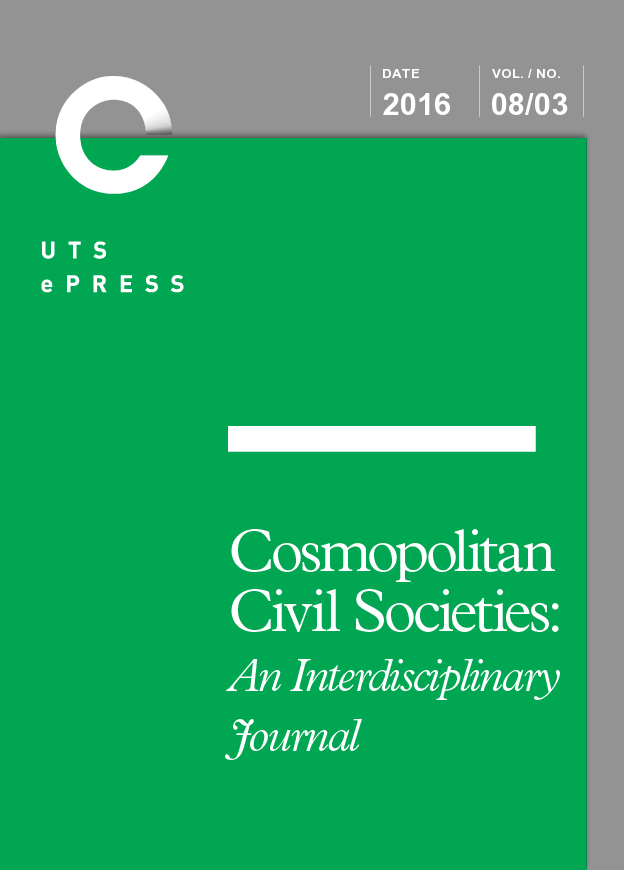Ethnocracy and Post-Ethnocracy in Fiji
Main Article Content
Abstract
Fiji’s history is interspersed with ethnic conflict, military coups, new constitutions and democratic elections. Ethnic tensions started to increase in the 1960s and reached its peak with violent indigenous Fijian ethnic assertion in the form of military coups in 1987. Following the coup, the constitution adopted at independence was abrogated and a constitution that provided indigenous political hegemony was promulgated in 1990. However, by 1993, there were serious and irreparable divisions within the indigenous Fijian community, forcing coup leader Sitiveni Rabuka to spearhead a constitution review. The result of the review was the multiracial 1997 Constitution which failed to resolve deep seated ethnic tensions, resulting in another nationalist coup in 2000 and a mutiny at the military barracks in December of that year. Following the failed mutiny, the Commander of the Republic of the Fiji Military Forces, Voreqe Bainimarama, publicly criticised nationalist policies of the government of Prime Minister Laisenia Qarase, culminating in another military coup in 2006. The new military government started plans to de-ethnise the Fijian state and promulgated a constitution that promoted ethnic equality.
Post independence Fiji is characterised by these conflicts over ethnocracy. The ethnic hegemony of indigenous Fijian chiefs is set against inter-ethnic counter hegemony. While democratic politics encourages inter-ethic alliance-building, the ethnic hegemony of the chiefs has been asserted by force. Latterly, the fragmentation of the ethnic hegemony has reconfigured inter-ethnic alliances, and the military has emerged as a vehicle for de-ethnicisation. The article analyses this cyclical pattern of ethnic hegemony and multiethnic counter hegemony as a struggle over (and against) Fijian ethnocracy.
Article Details
Issue
Section
Authors who submit articles to this journal from 31st March 2014 for publication, agree to the following terms:
a) Authors retain copyright and grant the journal right of first publication with the work simultaneously licensed under a Creative Commons Attribution License that allows others to share and adapt the work with an acknowledgement of the work's authorship and initial publication in this journal.
b) Authors are able to enter into separate, additional contractual arrangements for the non-exclusive distribution of the journal's published version of the work (e.g., post it to an institutional repository or publish it in a book), with an acknowledgement of its initial publication in this journal.
c) Authors are permitted and encouraged to post their work online (e.g., in institutional repositories or on their website) prior to and during the submission process, as it can lead to productive exchanges, as well as earlier and greater citation of published work (See The Open Access Citation Advantage Service). Where authors include such a work in an institutional repository or on their website (ie. a copy of a work which has been published in a UTS ePRESS journal, or a pre-print or post-print version of that work), we request that they include a statement that acknowledges the UTS ePRESS publication including the name of the journal, the volume number and a web-link to the journal item.
d) Authors should be aware that the Creative Commons Attribution (CC-BY) License permits readers to share (copy and redistribute the work in any medium or format) and adapt (remix, transform, and build upon the work) for any purpose, even commercially, provided they also give appropriate credit to the work, provide a link to the license, and indicate if changes were made. They may do these things in any reasonable manner, but not in any way that suggests you or your publisher endorses their use.
For Volume 5 No 3 (2013) and before, the following copyright applied:
Authors submitting articles to UTSePress publications agree to assign a limited license to UTSePress if and when the manuscript is accepted for publication. This license allows UTSePress to publish a manuscript in a given issue. Articles published by UTSePress are protected by copyright which is retained by the authors who assert their moral rights. Authors control translation and reproduction rights to their works published by UTSePress. UTSePress publications are copyright and all rights are reserved worldwide. Downloads of specific portions of them are permitted for personal use only, not for commercial use or resale. Permissions to reprint or use any materials should be directed to UTSePress.
